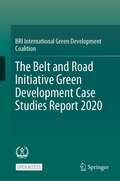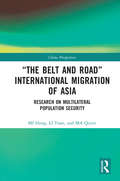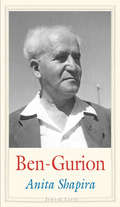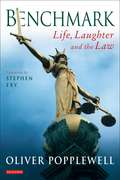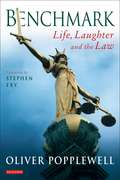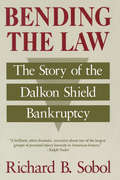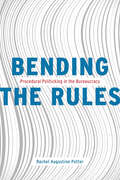- Table View
- List View
The Belt and Road Initiative Green Development Case Studies Report 2020
by BRI International Green DevelopmentThis is an Open Access book. In accordance with the 2030 Agenda for Sustainable Development, it showcases 17 projects under the framework of Belt & Road Initiative (BRI). These projects cover ninefields, namely, biodiversity and ecosystem, clean energy, clean water, sustainable transportation, solid waste treatment, sustainable consumption and production, green buildings, sustainable foodproduction and corporate social responsibility. Aiming at achieving green development, these projects, in their implementation, adhere to the concept of ecological civilization, combine China’s strict environmental protection systems and international standards, and take various measures of environmental protection based on the conditions of the local environment. These measures include joint efforts with local governments, businesses and communities, optimizating of design and construction plans, strict controling over different types of pollutants, and in situ conservation of species and ecosystems.The experience and practice of these 13 projects set an example for the latecomers.
The Belt and Road Initiative in Asia, Africa, and Europe (Routledge Series on the Belt and Road Initiative)
by David M. Arase Pedro Miguel Amakasu Raposo De Medeiro CarvalhoThis book examines the progress and reception of China’s Belt and Road Initiative (BRI) in key subregions of Asia, Africa and Europe. Through its exploration of the patchwork of distinctive sub regions of each continent, the book analyses how well the BRI accommodates sub regional variation as it attempts to integrate Asia, Africa, and Europe under Chinese auspices. Individual chapters focus on how developing subregions experience BRI relations with China, while others focus on how liberal powers seek to compete with China’s BRI agenda. The contributions also gauge the impact of the COVID-19 pandemic on the BRI in regional settings and point to its future implications. Offering a panoramic view of the vast mosaic of Asian, African, and European sub regions targeted by the BRI, this book will be of interest to scholars and students of International Relations and Global Political Economy as well as Chinese politics and those with an interest in the Belt and Road Initiative more broadly.
The Belt and Road Initiative in Asia, Africa, and Europe (Routledge Series on the Belt and Road Initiative)
by David M. Arase Pedro Miguel Amakasu Raposo de Medeiros CarvalhoThis book examines the progress and reception of China’s Belt and Road Initiative (BRI) in key subregions of Asia, Africa and Europe. Through its exploration of the patchwork of distinctive sub regions of each continent, the book analyses how well the BRI accommodates sub regional variation as it attempts to integrate Asia, Africa, and Europe under Chinese auspices. Individual chapters focus on how developing subregions experience BRI relations with China, while others focus on how liberal powers seek to compete with China’s BRI agenda. The contributions also gauge the impact of the COVID-19 pandemic on the BRI in regional settings and point to its future implications. Offering a panoramic view of the vast mosaic of Asian, African, and European sub regions targeted by the BRI, this book will be of interest to scholars and students of International Relations and Global Political Economy as well as Chinese politics and those with an interest in the Belt and Road Initiative more broadly.
Belt and Road Initiative in South America: Explaining the Varying Responses
by Lunting WuThis book is concerned with the varying responses of South American countries to the Belt and Road Initiative (BRI). Since Beijing launched the Belt and Road Initiative in 2013, 3/4 of countries in the world have engaged with China's arrangement of promoting global physical and digital connectivity. This still leaves a quarter of them that have refused China’s offer so far or withdrawn. How do we account for why countries chose to join the BRI while others do not? Research on South American countries’ responses to the BRI is scant, but the topic is pertinent. While the great-power competition and systemic rivalry have spoiled the appetite of European countries to intensify their ties with China, many developing countries seem to be rather interested. This book will interest scholars of international political economy, geopolitics, foreign policy and international development.
The Belt and Road Initiative in South–South Cooperation: The Impact on World Trade and Geopolitics
by Li Sheng Dmitri Felix NascimentoThis book seeks to illuminate what China's Belt and Road initiative truly means for the global south, offering historical context and explaining the vision that the Chinese State has in coordinating actions in the territorial, political and economic spheres in a multilateral pretension. How does the BRI generate economic returns for China, and what are the political and economic impacts of the BRI? In this provocative and deeply researched new work, the authors provide a new framework for understanding the BRI, one which will be useful to scholars, policymakers and economists.
The Belt and Road Initiative: Key Concepts
by Huping ShangThis book introduces the “Belt and Road” in its entirety, including what it is, what it aims to do, what it can do and how. This book can serve as a helpful resource for the general public, it can improve their understanding about the “Belt and Road” and its relative economics, policy, culture and so on. Also, this book is good reading for academics, as well as students of public management, politics, finance and economics. The “Belt and Road” advances a whole complementary set of new ideas on international cooperation. Conforming to the principles of peace and cooperation, openness and inclusiveness, mutual learning and mutual benefit, it stipulates policy coordination, facilitates connectivity, unimpeded trade, financial integration and people-to-people bonds as the five major contents, and promotes practical cooperation in all fields. It also works to build an open and win-win regional community featuring mutual political trust, economic integration and cultural inclusiveness.
“The Belt and Road” International Migration of Asia: Research on Multilateral Population Security (China Perspectives)
by MI Hong LI Yuan MA QiyiniThe book studies multilateral population security issues and relevant governance strategies caused by international migration in the countries impacted by China’s Belt and Road initiative and their border areas.Buttressed by solid data mining and policy analysis, the title looks into the demographic trends of international migration in China and some Asian Belt and Road countries and stresses the urgency for more effective governance practices. Seeking to address the population security crisis triggered by the Initiative, the authors propose the idea of “multilateral population security governance”, grounded in the real-world challenges facing Belt and Road countries while also drawing on experiences of migration governance in western countries. As a new governance model, it calls for cross-border joint action and takes into consideration pertinent factors including economy, politics, culture, religion and commerce. Several case studies and comparative studies are offered in the chapters to illuminate the significance and effect of this cooperative mechanism.The book will be of interest to researchers and government officials interested in non-traditional security, international migration and formal demography as well as topics on population, resources and environment.
“The Belt and Road” International Migration of Asia: Research on Multilateral Population Security (China Perspectives)
by MI Hong LI Yuan MA QiyiniThe book studies multilateral population security issues and relevant governance strategies caused by international migration in the countries impacted by China’s Belt and Road initiative and their border areas.Buttressed by solid data mining and policy analysis, the title looks into the demographic trends of international migration in China and some Asian Belt and Road countries and stresses the urgency for more effective governance practices. Seeking to address the population security crisis triggered by the Initiative, the authors propose the idea of “multilateral population security governance”, grounded in the real-world challenges facing Belt and Road countries while also drawing on experiences of migration governance in western countries. As a new governance model, it calls for cross-border joint action and takes into consideration pertinent factors including economy, politics, culture, religion and commerce. Several case studies and comparative studies are offered in the chapters to illuminate the significance and effect of this cooperative mechanism.The book will be of interest to researchers and government officials interested in non-traditional security, international migration and formal demography as well as topics on population, resources and environment.
The Belt & Road Initiative in the Global Arena: Chinese and European Perspectives
by Yu Cheng Lilei Song Lihe HuangThis book is among the first to systematically analyze and discuss the Chinese government's“One Belt, One Road” initiative to promote infrastructure investment and economic development, bringing together a diverse range of scholars from China, Russia, and Eastern Europe. The book assembles a package of next generation ideas for the patterns of regional trade, investment, infrastructure development, or next steps for the promotion of enhanced policy coordination across the Eurasian continent and strategic implications for EU, Russia and other major powers, introducing innovative ideas about what these countries across belt and road can do together in the eyes of the young generation. This book will be of interest to scholars, economists, and interested observers of the international impact of Chinese development.
The Belt & Road Initiative in the Global Arena: Chinese and European Perspectives
by Yu Cheng Lilei Song Lihe HuangThis book is among the first to systematically analyze and discuss the Chinese government's“One Belt, One Road” initiative to promote infrastructure investment and economic development, bringing together a diverse range of scholars from China, Russia, and Eastern Europe. The book assembles a package of next generation ideas for the patterns of regional trade, investment, infrastructure development, or next steps for the promotion of enhanced policy coordination across the Eurasian continent and strategic implications for EU, Russia and other major powers, introducing innovative ideas about what these countries across belt and road can do together in the eyes of the young generation. This book will be of interest to scholars, economists, and interested observers of the international impact of Chinese development.
Ben Ali's Tunisia: Power and Contention in an Authoritarian Regime
by Anne WolfBased on a wealth of new primary data, this book offers the first account of the internal regime factors that ultimately caused the fall of Zine el-Abidine Ben Ali's long dictatorship in Tunisia during the Arab Uprisings. Anne Wolf's account challenges studies that focus on the role of mass mobilization alone, and demonstrates that in the last decade of Ben Ali's presidency, dissent within his ruling party - the Constitutional Democratic Rally - mounted to such an extent that followers began challenging their own powerbroker. The culmination of this was a secret coup d'état staged by regime figures against Ben Ali in January 2011, an event that has not previously been uncovered. Wolf proposes a new theory of power and contention within ruling parties in authoritarian regimes to explain how dictators seek to fortify their rule and foster party-political stability, but also when, why, and how they succumb to internal contention and with what effect.
Ben Ali's Tunisia: Power and Contention in an Authoritarian Regime
by Anne WolfBased on a wealth of new primary data, this book offers the first account of the internal regime factors that ultimately caused the fall of Zine el-Abidine Ben Ali's long dictatorship in Tunisia during the Arab Uprisings. Anne Wolf's account challenges studies that focus on the role of mass mobilization alone, and demonstrates that in the last decade of Ben Ali's presidency, dissent within his ruling party - the Constitutional Democratic Rally - mounted to such an extent that followers began challenging their own powerbroker. The culmination of this was a secret coup d'état staged by regime figures against Ben Ali in January 2011, an event that has not previously been uncovered. Wolf proposes a new theory of power and contention within ruling parties in authoritarian regimes to explain how dictators seek to fortify their rule and foster party-political stability, but also when, why, and how they succumb to internal contention and with what effect.
Ben-Gurion: Father of Modern Israel (Jewish Lives)
by Anita ShapiraDavid Ben-Gurion cast a great shadow during his lifetime, and his legacy continues to be sharply debated to this day. There have been many books written about the life and accomplishments of the Zionist icon and founder of modern Israel, but this new biography by eminent Israeli historian Anita Shapira strives to get to the core of the complex man who would become the face of the new Jewish nation. Shapira tells the Ben-Gurion story anew, focusing especially on the period after 1948, during the first years of statehood. As a result of her extensive research and singular access to Ben-Gurion’s personal archives, the author provides fascinating and original insights into his personal qualities and those that defined his political leadership. As Shapira writes, “Ben-Gurion liked to argue that history is made by the masses, not individuals. But just as Lenin brought the Bolshevik Revolution into the world and Churchill delivered a fighting Britain, so with Ben-Gurion and the Jewish state. He knew how to create and exploit the circumstances that made its birth possible.” Shapira’s portrait reveals the flesh-and-blood man who more than anyone else realized the Israeli state.
Benchmark: Life, Laughter and the Law
by Oliver PopplewellSir Oliver Popplewella's career goes a long way to explode myths and to show what judges are really like: impartial, skilled in the law, above party politics certainly, but essentially human. He was certainly born into a comfortable middle-class family, but his upbringing was (to quote from Stephen Frya's Foreword to this book) "more Betjeman Metroland than Wodehouse Mayfaira". Sir Oliver was called to the Bar by the Inner Temple and a successful career at the junior bar and on the Oxford and Midland Circuit culminated in his becoming a QC and his subsequent elevation to the High Court Bench. Various high profile cases followed involving public figures - Jonathan Aitken, Lawrence Dallaglio, the England rugby captain, or the sprinter Linford Christie in Christie v McVicar, the editor of Spike magazine - and the public enquiry into the tragic fire at the Bradford City football ground. This autobiography is an absorbing portrait of the career of one of England's most distinguished lawyers, recounted in a witty, intelligent and effortlessly engaging style.
Benchmark: Life, Laughter and the Law
by Oliver PopplewellSir Oliver Popplewella's career goes a long way to explode myths and to show what judges are really like: impartial, skilled in the law, above party politics certainly, but essentially human. He was certainly born into a comfortable middle-class family, but his upbringing was (to quote from Stephen Frya's Foreword to this book) "more Betjeman Metroland than Wodehouse Mayfaira". Sir Oliver was called to the Bar by the Inner Temple and a successful career at the junior bar and on the Oxford and Midland Circuit culminated in his becoming a QC and his subsequent elevation to the High Court Bench. Various high profile cases followed involving public figures - Jonathan Aitken, Lawrence Dallaglio, the England rugby captain, or the sprinter Linford Christie in Christie v McVicar, the editor of Spike magazine - and the public enquiry into the tragic fire at the Bradford City football ground. This autobiography is an absorbing portrait of the career of one of England's most distinguished lawyers, recounted in a witty, intelligent and effortlessly engaging style.
Benchmarking Deutschland: Bericht der Arbeitsgruppe Benchmarking und der Bertelsmann Stiftung
by Werner Eichhorst Stefan Profit Eric ThodeDer Bericht Benchmarking Deutschland beurteilt den Wirtschafts- und Sozialstandort Deutschland im internationalen Vergleich. Im Mittelpunkt steht die Entwicklung des Arbeitsmarktes und der Politikbereiche, die im Wesentlichen auf die Beschäftigungsdynamik einwirken. Ziel dieses Berichts ist die Erkennung von Stärken und Schwächen und die Suche nach praktisch umsetzbaren Reformansätzen. Das Benchmarking Deutschland, das erste seiner Art, ist in enger Zusammenarbeit mit der Arbeitsgruppe Benchmarking des Bündnisses für Arbeit entstanden. Es gründet sich auf einen umfassenden Bestand an international vergleichbaren Daten sowie die führende einschlägige Literatur und gibt in der kompakten und leicht zugänglichen Form eines Kompendiums die von den Akteuren gemeinsam anerkannten Datenlage wieder.
Benchmarking Deutschland 2004: Arbeitsmarkt und Beschäftigung Bericht der Bertelsmann Stiftung
by Werner Eichhorst Eric Thode Frank WinterDer Bericht 2004 bringt die Analysen des ersten Benchmarking-Berichts von 2001 auf den neuesten Stand. Er untersucht anhand einer breiten Zusammenstellung von Zahlen und Fakten die Entwicklung von Beschäftigung und Arbeitslosigkeit in Deutschland im Vergleich zu den OECD-Ländern und geht der Frage nach, inwieweit konjunkturelle, in erster Linie aber institutionelle Faktoren hierauf einwirken. Konkret stellt der Bericht die wesentlichen Kennziffern aus den Bereichen Arbeitsmarkt- und Sozialpolitik, Arbeitszeit- und Arbeitsmarktregulierung, Unternehmertätigkeit, Lohn- und Tarifpolitik, Bildung sowie Innovation und Makroökonomie dar. Insbesondere zeigt er auf, inwieweit die jüngsten Reformen in Deutschland zur Behebung von Schwächen im deutschen Beschäftigungssystem beigetragen haben oder entsprechende Effekte zu erwarten sind und wo weiterhin Handlungsbedarf besteht. Darüber hinaus weist er auf bewährte Praktiken im Ausland hin, die als Anregungen in die deutsche Reformdiskussion einfließen könnten.
Benchmarking in the Public and Nonprofit Sectors: Best Practices for Achieving Performance Breakthroughs
by Patricia Keehley Neil AbercrombieThe first edition of Benchmarking in the Public and Nonprofit Sectors offered public officials and administrators at all levels of government a unique and practical guide to identifying best practices and implementing them in their organizations. Based on the most current research, this new edition of the best-selling guide provides an updated, solution-driven methodology for benchmarking in both the public and nonprofit sectors. Unique in its focus solely on benchmarking, the authors take a step-by-step approach to two benchmarking techniques, differentiating between the two and then providing a new approach to solution-driven benchmarking that requires less time and fewer resources. Benchmarking in the Public and Nonprofit Sectors provides new tools, many updated case studies, and additional examples not only from government and nonprofit agencies, but also from the international community. This important resource will help practitioners implement a quick, proven method as they search for solutions to their most pressing problems. Praise for Benchmarking in the Public and Nonprofit Sectors "This is an important management tool for government and nonprofit managers to make their agencies more effective, efficient, and responsive to their constituencies." -W. David Patton, director, Center for Public Policy and Administration, University of Utah
Bending the Law: The Story of the Dalkon Shield Bankruptcy (Monuments Of Renaissance Music Ser.)
by Richard B. SobolWinner of the American Bar Association's 1992 Silver Gavel Award "in recognition of an outstanding contribution to public understanding of the American system of law and justice." "Mr. Sobol has produced a readable yet fully researched and detailed study of the operation of the bankruptcy and its effects upon all concerned—the women who were injured, the swarms of lawyers who represented parties in the bankruptcy, and the court which oversaw the bankruptcy in Richmond. . . . This book adds greatly to the current debate about how strong a managerial federal judge our system should have."—Paul D. Rheingold, New York Law Journal "Bending the Law is polemical and relentless. It is also minutely researched, fluidly written, and persuasive."—Paul Reidinger, ABA Journal "Bending the Law is a must read for bankruptcy practitioners, and for anyone else concerned about the use of bankruptcy law to deal with mass torts. Although its author is a civil rights lawyer, he details the subtle art of practicing bankruptcy law with a discerning eye, and is a gifted storyteller as well."—Joryn Jenkins, Federal Bar News and Journal "This is an accessible history of the case by a veteran civil-rights lawyer."—Washington Post Book World
Bending the Rules: Procedural Politicking in the Bureaucracy
by Rachel Augustine PotterWho determines the fuel standards for our cars? What about whether Plan B, the morning-after pill, is sold at the local pharmacy? Many people assume such important and controversial policy decisions originate in the halls of Congress. But the choreographed actions of Congress and the president account for only a small portion of the laws created in the United States. By some estimates, more than ninety percent of law is created by administrative rules issued by federal agencies like the Environmental Protection Agency and the Department of Health and Human Services, where unelected bureaucrats with particular policy goals and preferences respond to the incentives created by a complex, procedure-bound rulemaking process. With Bending the Rules, Rachel Augustine Potter shows that rulemaking is not the rote administrative activity it is commonly imagined to be but rather an intensely political activity in its own right. Because rulemaking occurs in a separation of powers system, bureaucrats are not free to implement their preferred policies unimpeded: the president, Congress, and the courts can all get involved in the process, often at the bidding of affected interest groups. However, rather than capitulating to demands, bureaucrats routinely employ “procedural politicking,” using their deep knowledge of the process to strategically insulate their proposals from political scrutiny and interference. Tracing the rulemaking process from when an agency first begins working on a rule to when it completes that regulatory action, Potter shows how bureaucrats use procedures to resist interference from Congress, the President, and the courts at each stage of the process. This exercise reveals that unelected bureaucrats wield considerable influence over the direction of public policy in the United States.
Bending the Rules: Procedural Politicking in the Bureaucracy
by Rachel Augustine PotterWho determines the fuel standards for our cars? What about whether Plan B, the morning-after pill, is sold at the local pharmacy? Many people assume such important and controversial policy decisions originate in the halls of Congress. But the choreographed actions of Congress and the president account for only a small portion of the laws created in the United States. By some estimates, more than ninety percent of law is created by administrative rules issued by federal agencies like the Environmental Protection Agency and the Department of Health and Human Services, where unelected bureaucrats with particular policy goals and preferences respond to the incentives created by a complex, procedure-bound rulemaking process. With Bending the Rules, Rachel Augustine Potter shows that rulemaking is not the rote administrative activity it is commonly imagined to be but rather an intensely political activity in its own right. Because rulemaking occurs in a separation of powers system, bureaucrats are not free to implement their preferred policies unimpeded: the president, Congress, and the courts can all get involved in the process, often at the bidding of affected interest groups. However, rather than capitulating to demands, bureaucrats routinely employ “procedural politicking,” using their deep knowledge of the process to strategically insulate their proposals from political scrutiny and interference. Tracing the rulemaking process from when an agency first begins working on a rule to when it completes that regulatory action, Potter shows how bureaucrats use procedures to resist interference from Congress, the President, and the courts at each stage of the process. This exercise reveals that unelected bureaucrats wield considerable influence over the direction of public policy in the United States.
Bending the Rules: Procedural Politicking in the Bureaucracy
by Rachel Augustine PotterWho determines the fuel standards for our cars? What about whether Plan B, the morning-after pill, is sold at the local pharmacy? Many people assume such important and controversial policy decisions originate in the halls of Congress. But the choreographed actions of Congress and the president account for only a small portion of the laws created in the United States. By some estimates, more than ninety percent of law is created by administrative rules issued by federal agencies like the Environmental Protection Agency and the Department of Health and Human Services, where unelected bureaucrats with particular policy goals and preferences respond to the incentives created by a complex, procedure-bound rulemaking process. With Bending the Rules, Rachel Augustine Potter shows that rulemaking is not the rote administrative activity it is commonly imagined to be but rather an intensely political activity in its own right. Because rulemaking occurs in a separation of powers system, bureaucrats are not free to implement their preferred policies unimpeded: the president, Congress, and the courts can all get involved in the process, often at the bidding of affected interest groups. However, rather than capitulating to demands, bureaucrats routinely employ “procedural politicking,” using their deep knowledge of the process to strategically insulate their proposals from political scrutiny and interference. Tracing the rulemaking process from when an agency first begins working on a rule to when it completes that regulatory action, Potter shows how bureaucrats use procedures to resist interference from Congress, the President, and the courts at each stage of the process. This exercise reveals that unelected bureaucrats wield considerable influence over the direction of public policy in the United States.
Bending the Rules: Procedural Politicking in the Bureaucracy
by Rachel Augustine PotterWho determines the fuel standards for our cars? What about whether Plan B, the morning-after pill, is sold at the local pharmacy? Many people assume such important and controversial policy decisions originate in the halls of Congress. But the choreographed actions of Congress and the president account for only a small portion of the laws created in the United States. By some estimates, more than ninety percent of law is created by administrative rules issued by federal agencies like the Environmental Protection Agency and the Department of Health and Human Services, where unelected bureaucrats with particular policy goals and preferences respond to the incentives created by a complex, procedure-bound rulemaking process. With Bending the Rules, Rachel Augustine Potter shows that rulemaking is not the rote administrative activity it is commonly imagined to be but rather an intensely political activity in its own right. Because rulemaking occurs in a separation of powers system, bureaucrats are not free to implement their preferred policies unimpeded: the president, Congress, and the courts can all get involved in the process, often at the bidding of affected interest groups. However, rather than capitulating to demands, bureaucrats routinely employ “procedural politicking,” using their deep knowledge of the process to strategically insulate their proposals from political scrutiny and interference. Tracing the rulemaking process from when an agency first begins working on a rule to when it completes that regulatory action, Potter shows how bureaucrats use procedures to resist interference from Congress, the President, and the courts at each stage of the process. This exercise reveals that unelected bureaucrats wield considerable influence over the direction of public policy in the United States.
Bending the Rules: Procedural Politicking in the Bureaucracy
by Rachel Augustine PotterWho determines the fuel standards for our cars? What about whether Plan B, the morning-after pill, is sold at the local pharmacy? Many people assume such important and controversial policy decisions originate in the halls of Congress. But the choreographed actions of Congress and the president account for only a small portion of the laws created in the United States. By some estimates, more than ninety percent of law is created by administrative rules issued by federal agencies like the Environmental Protection Agency and the Department of Health and Human Services, where unelected bureaucrats with particular policy goals and preferences respond to the incentives created by a complex, procedure-bound rulemaking process. With Bending the Rules, Rachel Augustine Potter shows that rulemaking is not the rote administrative activity it is commonly imagined to be but rather an intensely political activity in its own right. Because rulemaking occurs in a separation of powers system, bureaucrats are not free to implement their preferred policies unimpeded: the president, Congress, and the courts can all get involved in the process, often at the bidding of affected interest groups. However, rather than capitulating to demands, bureaucrats routinely employ “procedural politicking,” using their deep knowledge of the process to strategically insulate their proposals from political scrutiny and interference. Tracing the rulemaking process from when an agency first begins working on a rule to when it completes that regulatory action, Potter shows how bureaucrats use procedures to resist interference from Congress, the President, and the courts at each stage of the process. This exercise reveals that unelected bureaucrats wield considerable influence over the direction of public policy in the United States.
Bending the Rules: Procedural Politicking in the Bureaucracy
by Rachel Augustine PotterWho determines the fuel standards for our cars? What about whether Plan B, the morning-after pill, is sold at the local pharmacy? Many people assume such important and controversial policy decisions originate in the halls of Congress. But the choreographed actions of Congress and the president account for only a small portion of the laws created in the United States. By some estimates, more than ninety percent of law is created by administrative rules issued by federal agencies like the Environmental Protection Agency and the Department of Health and Human Services, where unelected bureaucrats with particular policy goals and preferences respond to the incentives created by a complex, procedure-bound rulemaking process. With Bending the Rules, Rachel Augustine Potter shows that rulemaking is not the rote administrative activity it is commonly imagined to be but rather an intensely political activity in its own right. Because rulemaking occurs in a separation of powers system, bureaucrats are not free to implement their preferred policies unimpeded: the president, Congress, and the courts can all get involved in the process, often at the bidding of affected interest groups. However, rather than capitulating to demands, bureaucrats routinely employ “procedural politicking,” using their deep knowledge of the process to strategically insulate their proposals from political scrutiny and interference. Tracing the rulemaking process from when an agency first begins working on a rule to when it completes that regulatory action, Potter shows how bureaucrats use procedures to resist interference from Congress, the President, and the courts at each stage of the process. This exercise reveals that unelected bureaucrats wield considerable influence over the direction of public policy in the United States.
